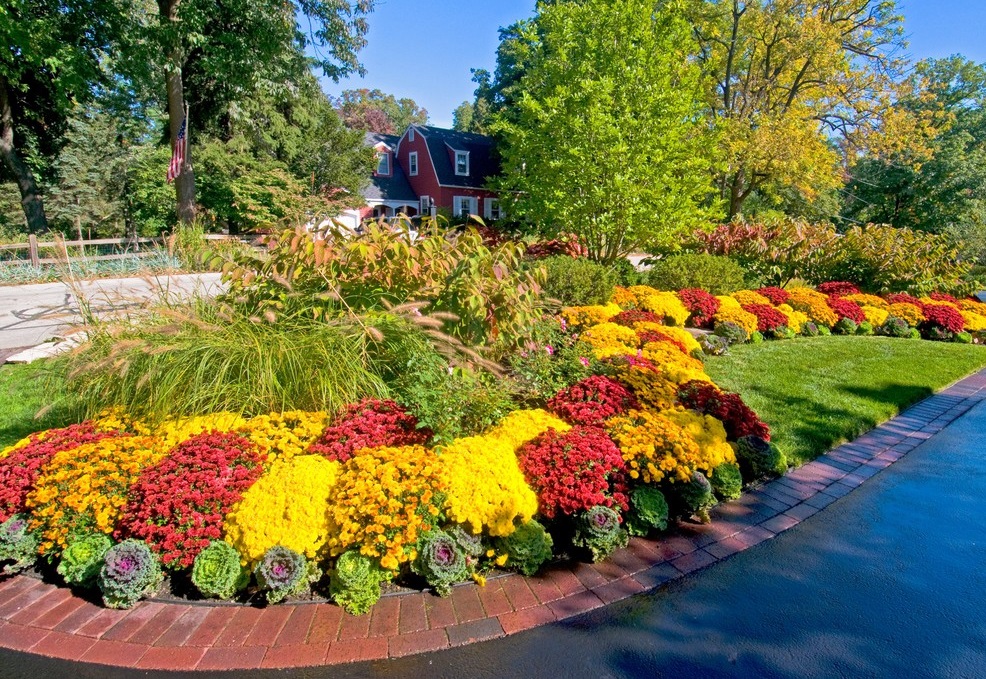Lupins are one of the most common ornamental plants, with which even people with little knowledge of plant growing are familiar. They are known to many as unpretentious plants that are grown in different regions of our country. Many growers grow them just because of their ease of care, rapid growth and rich colors.
But for some people, lupins are nothing more than a common weed. It is difficult to fall in love with flowers that can fill quite large areas.
Content
Plant features
Lupins are one of the famous members of the legume family. At first, the man got acquainted with wild-growing species that strongly resembled peas. But the situation has changed with the breeding of hybrids, which are widely used for decorative purposes in the design of sites. And today these flowers are grown in many countries.
The variety of shades is one of the main reasons why lupins are increasingly found in the areas of our gardeners. Flower decoration can include white, pink, lilac, yellow and red shades. but the ability to grow tricolor makes them more spectacular, but only some types of lupine have this property... It is enough to plant such varieties once, and in a few years a wide carpet will be created on the site, effectively decorating the soil with a variety of bright colors.
Lupine flowers begin to open in the first weeks of summer. They form a wonderful composition in combination with peonies.
Lupins are of interest not only because of their attractiveness and unpretentiousness in growing. The presence of this plant helps to increase soil fertility.... Plants provide this effect due to the presence of nitrogen-fixing bacteria on the tubers. The greatest benefit in this regard is the cultivation of blue lupine.
Main types and varieties
The genus of lupine includes about a thousand species. Moreover, for the first time a person got acquainted with annual varieties even 2000 years ago BC.
The largest representation in different parts of our planet has approximately 200 main types... With regard to our country, it can be noted that the following four types are most represented here:
- yellow;
- white;
- narrow-leaved;
- multi-leaved.
Depending on the growing period, these plants can be divided into three main groups:
- annuals;
- biennial;
- perennial.
Moreover, lupins can differ in their size, on the basis of which they are usually subdivided into dwarf giant varieties. Also depending on the form of growth, there are herbaceous species and shrubs.
Each of the listed species has its own characteristics, which will also be useful to learn more about:
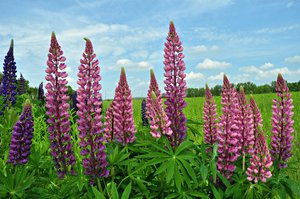 Yellow. An annual variety that produces yellow flowers during the growing season. Usually they are quite large and do not exceed 1 meter in size.This variety is not too cold hardy, unlike blue lupine. It belongs to the group of cross-pollinated plants. The place where the seeds are formed is located on the sides. The characteristic color of yellow lupine is pink speckled or white. The seed mass is 120-150 gr. per thousand.
Yellow. An annual variety that produces yellow flowers during the growing season. Usually they are quite large and do not exceed 1 meter in size.This variety is not too cold hardy, unlike blue lupine. It belongs to the group of cross-pollinated plants. The place where the seeds are formed is located on the sides. The characteristic color of yellow lupine is pink speckled or white. The seed mass is 120-150 gr. per thousand.- White. This variety can be most often found in European countries. It is a tall plant, growing up to 2 meters in height. For the first time, people got acquainted with this variety in Ancient Egypt and Greece. Then he was one of those plants that were used for food. The plant responds well to light, can tolerate long periods of drought, but it is very demanding on the soil. The mass of seeds is 250–500 gr. per thousand. The seeds themselves are rather large. The characteristic shade is white or white with pink.
- Narrow-leaved. The variety stands out with blue flowers, although there are species in which the inflorescences are white or purple. Belongs to the group of self-pollinated annuals. It is a tall member of the family, growing in height up to 1.5 meters. A big plus of the plant is a high percentage of germination, which it demonstrates perfectly even in harsh conditions. The seeds of a narrow-leaved lupine with a marble pattern look original. The seed mass is 180-200 gr. per thousand. During the first season after planting, a rosette of leaves forms. On average, it grows no higher than 120 cm. It can grow on any soil. One gram of weight can contain up to 45 seeds. It was first cultivated in Alaska.
- Lulu "Russell" variety. This plant not only germinates very quickly, but also has a rather compact shape. It is a low-growing plant, it grows up to 60 cm in height.A favorable moment for planting in open ground occurs already in April. Flowering time begins in 13 weeks. This annual plant can be perfectly grown in the vicinity of perennials.
- Tree-like. It enters the flowering phase at the end of July, and sometimes in August. It belongs to the perennial group, growing in height up to 1.5 meters. The characteristic color of the flowers is white or yellow.
- Lupine decorated. This plant is interesting for its delicate graceful appearance, it can grow up to 80 cm in height.
This is only a small part of the wide variety of varieties that are found on our planet. The species described above are represented on the territory of our country in the greatest number. On other continents, other varieties of lupine are more common. For example, in America, the popular are dwarf, hybrid, fickle and decorated.
Given the harsh conditions of our country, it is recommended to choose special varieties of lupine for cultivation that are resistant to severe frosts and drought.
How to choose a planting site and prepare the soil?
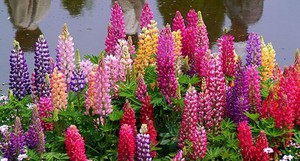 Although lupins can grow in all types of soil, not every type of soil will be suitable for them. This applies to acidic soilswhere they are more likely to turn yellow. It is impossible to create favorable conditions for the development of lupine on soils where there is an excess of alkali.
Although lupins can grow in all types of soil, not every type of soil will be suitable for them. This applies to acidic soilswhere they are more likely to turn yellow. It is impossible to create favorable conditions for the development of lupine on soils where there is an excess of alkali.
It is beneficial to grow lupins in nutrient-poor soils that increase fertility over time. In order to improve the quality of the soil before planting lupins, peat and lime can be used as an additive to the planting soil.
As a light-loving plant, lupins can feel most comfortable in an area with partial shade.
Usually, special measures to prepare the soil for planting are not required. If the soil contains enough nutrients, then it is possible to sow seeds in the open ground in spring without preliminary preparations.


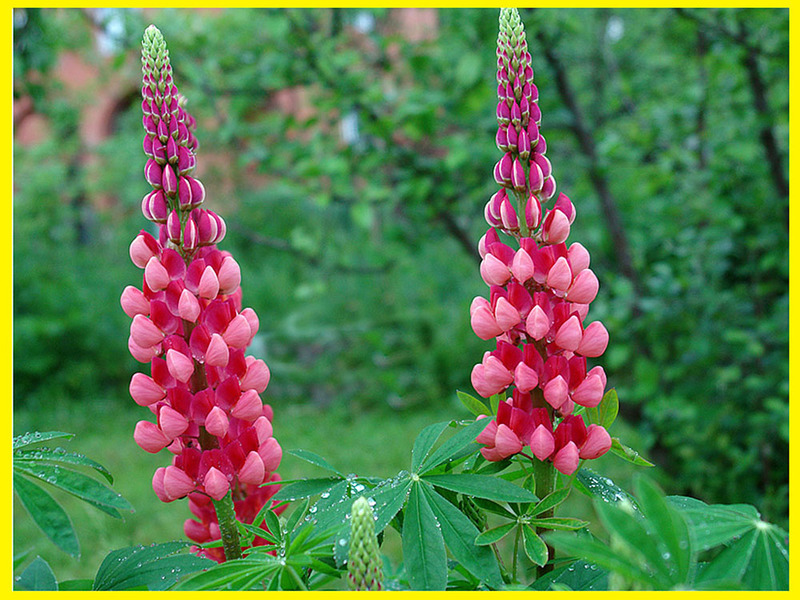
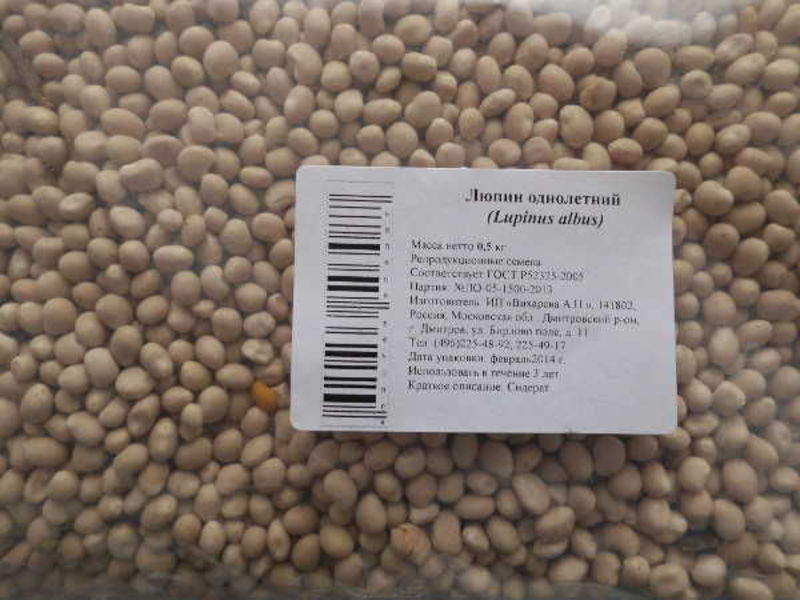
When to plant lupins?
Planting and caring for flowers outdoors must be timely. Usually sowing is carried out in the spring: for this the moment is chosen when the weather is warm enough, which usually happens already in April. Some growers practice sowing lupine even before winter. In this case, seeds are placed in the prepared hole, and sprinkled on top with a layer of peat.
Growing from seeds and seedlings
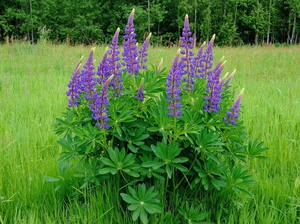 The process of growing perennial and annual species of lupine is a simple activity that can be done by any novice florist... Sowing seeds or seedlings, which can be carried out in April, can be used as the main methods.
The process of growing perennial and annual species of lupine is a simple activity that can be done by any novice florist... Sowing seeds or seedlings, which can be carried out in April, can be used as the main methods.
But first of all, you need to decide on a suitable place on the site. Further, the prepared seeds for sowing are buried to a depth of 2-3 cm. In conclusion, the land needs to be watered well.... In the first year, lupine flowers begin to bloom in early August.
Flower care
In relation to lupins, the main activities are carried out, as is the case with all other cultivated plants:
- watering. Irrigation is necessary in moderation. Usually, to meet the water needs of the plants, they are watered 1-2 times a week. With a small amount of rain, the frequency is increased up to 3-4 times;
- loosening. Each next watering must be completed by loosening. Let us remind you again that these flowers feel best on soils rich in oxygen;
- weeding. It is necessary to constantly monitor the cleanliness of the area where the lupins are grown, and remove weeds in a timely manner. Lupines will not benefit from the presence of other plants that form a shade. In this case, the flowers will begin to stretch and will not be able to demonstrate the decorative properties expected from them;
- garter and trim. If strong winds often occur in the place where lupins are grown, then they will need a garter. If this is not done, then under the influence of the wind, their stem may break, due to which they will lose their attractive appearance. At the age of 5 years, pruning is carried out. At this stage of the life cycle, they completely stop flowering or they begin to shrink. Pruning is also important after flowering to stimulate the re-formation of inflorescences;
- fertilization. Like other cultivated plants, lupines bloom well when planted in fertile soil. When growing flowers on poor soils, the situation can be corrected by applying any mineral or organic fertilizers. Top dressing can be done 2-3 times per season;
- pest control. Lupins, like other plants, can be affected by harmful insects. Most often damages the flowers of aphids. They fight it with insecticides designed to destroy this type of pest. You can scare off aphids, as well as a number of other insects, with the help of strongly odorous substances. A good preventive measure is to spray flowers with an infusion of wormwood, pepper and cinnamon.
Preparing for winter
In the fall, the gardener needs to choose one of the methods for wintering lupines:
- digging tubers for the winter;
- wintering in the ground.
Given that lupins are a cold-resistant crop, they can be left in the ground for the winter. However, first it is necessary to trim the aerial part so that after the operation the height of the stem is no more than 1–2 cm from the soil.
How to propagate a plant?
To obtain new plants, you can use the method of sowing seeds or reproduction with petioles.
If the first method was chosen, then you will need seeds that can be harvested after flowering. Sowing seeds to a permanent place can be carried out in the fall.
For reproduction of lupins with petioles, you will have to cut it out with part of the stem, and then transplant it to the prepared area.
What do plants like and what are they afraid of?
High vitality is one of the characteristic features of lupins. therefore some people treat them like a vicious weed, since you have to spend a lot of time and effort to remove them from the site. However, in unfavorable years, lupins can infect diseases.
Most often they suffer from powdery mildew, which appears when favorable conditions are created: the presence of shade, lack of nutrients in the soil, abundant planting around, strong temperature fluctuations.
Success in the fight against this disease largely depends on the time when the first treatment measures began. Very effective spray the infected plants with drugsdesigned to combat similar diseases.
In conclusion, they must loosen the soil, and also fertilize the soil. Care should be taken to ensure that there were no other plants on the site that could create shade for lupines. In the absence of such an opportunity, you should find a more suitable place for flowers.
Conclusion
Lupins do not need a special introduction, because many are familiar with it as a malicious weed that is very difficult to remove from the site. However, in reality, this is an ornamental plant that can decorate any site with its presence. But you need to choose the right place for lupines, because they feel best in conditions of little shading.
Allows you to achieve lush flowering of perennial lupins planting and care, carried out in accordance with the rules. So, on certain types of soil, it may be necessary to apply special fertilizers to normalize the acidity level, as well as increase fertility.


